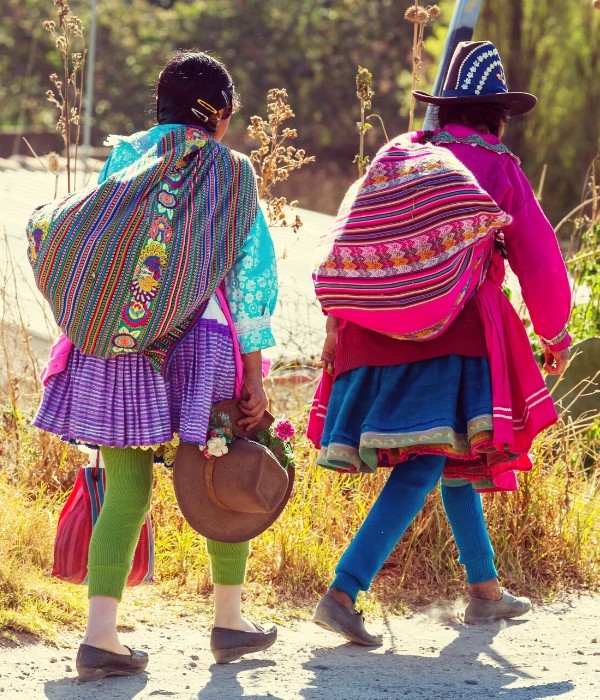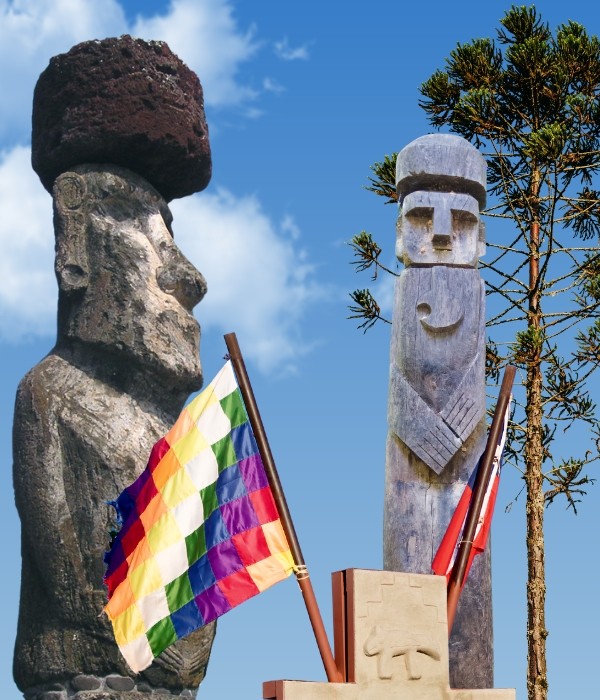Language constructs realities, there is no doubt about that. It is through its use that narratives emerge that transmit the history of each people and their collective consciousness. Different languages not only serve to express oneself, but also to tell experiences and representations of the world. That great cultural wealth is unfortunately at risk today. But from multilingual marketing, we can do a lot to prevent it from becoming extinct!
Globalization has connected thousands of civilizations in a matter of minutes, but it has also led many people to give up their native language. They make this decision for pragmatic reasons, in order to communicate with a greater number of people and increase their development alternatives. The bad thing is that with this, incalculable wealth suffers severe damage every day.
In Chile, 9 ethnic groups are recognized as native by indigenous law (Aymara, Quechua, Diaguita, Atacameña, Rapanui, Mapuche, Coya, Yámana and Kawésqar). Of their languages, Mapudungun, Rapanui and Aymara are vital, while Quechua, Kawésqar, Yagán and Chesungun are practically extinct. Kunza, Kakán, Colla, Chomo and Selk’nam are considered dead languages. A great loss for Chilean cultural heritage.
Reasons why it is important to use indigenous languages in multilingual marketing
Yes, the language problem is cultural. But from multilingual marketing we can make a great contribution! We have the power to prevent Chilean indigenous languages from dying and at the same time, generate closeness with an audience that has been long and unjustly made invisible.
It is true that to a greater or lesser extent, we can all recognize some messages in English. But can you imagine if all the information was in that language? How would you feel if someone spoke to you in your native language again? Surely a great closeness and identification. Familiarity.

Designing specific messages for Chilean indigenous peoples is a good multilingual marketing strategy, but also a great challenge. It is a conscious way to include different audiences, recognize them and speak to them with affection. Promote their culture, their wisdom and the contributions that their perspective provides to our history. But to do it effectively, you must first understand not only the words, but also the context.
Reach all your audiences
Although we do not hear them every day, in Chile the indigenous languages mentioned above are very current.
They have waged an arduous struggle to remain relevant and revitalize themselves in a world where discourses are increasingly unified.
Reaching these communities in their native language is a beautiful and great challenge for multilingual marketing. And fluid communication also implies a comprehensive understanding of your worldview. The impact that this could generate both culturally and in terms of results is worth it!
Promote the legacy of indigenous peoples
By using multilingual marketing we not only experiment with new ways to achieve our objectives, but we also contribute to revitalizing Chilean indigenous languages.
Social networks and the Internet, in the same way that they unify the codes through which we communicate, have also been valuable platforms to promote native culture. On YouTube we can even find some channels that teach native languages “in an easy way”, so that any interested user can learn them.
Chile has a wide diversity in terms of indigenous languages and there are many interesting cases of promotion of these cultures. An example of this is the Aymara people, who have set up radio stations, transmitting news in their native language. To do this, they receive help from university students and recent graduates of this ethnic group, who translate local information for their communities.
Aymara has made such efforts to revitalize its language that you can even see translated articles from Wikipedia. That is just an inspiration of how much can be done at a communication level to connect and include diverse cultures. We are capable of transmitting messages that excite native peoples and also move us with theirs. It is enough to have creativity to take these tools and put them to good use.
Keep Chilean indigenous languages alive!
By using native languages in multilingual marketing we are not only selling a product in a more dedicated and accessible way. While we do so, we also contribute to revitalizing the original Chilean language and preventing it from dying. For a code to be valid and functional in the transmission of the message, it must be shared by several people. Thus, by using it, we contribute a grain of sand for its diffusion.
How does a language die?

A language is considered extinct when it has no speakers and, in particular, if it has no descendants. This, even when there are people who master a large vocabulary in that dialect, as is the case of Latin.
The extinction of a language generally occurs due to any of the following phenomena: substitution, evolution or the disappearance of speakers due to dramatic causes. Let’s examine some of the reasons why several native Chilean languages have disappeared.

Why have some languages disappeared?
There are several causes that are pointed out as responsible for the extinction of native languages:
Racial violence
Many indigenous languages disappeared after the invasion or colonization of the lands they inhabited. This was a product of the colonizers’ imposition of language as a method of survival.
The desire for better economic opportunities
Many indigenous speakers decided to have their children adopt new languages, thinking that this way they would have a better future and more favorable job options. As there were entire communities that made this determination, their own language was lost in just two generations.
Language evolution
Language is alive and constantly changing. Every day neologisms and anglicisms are incorporated into our expressions that expand our word, causing the original language to be distorted.
All languages are valuable
The indigenous languages that have survived these processes have set a great example of resistance. They treasure multiple knowledge and memories that would not have transcended if it were not for their efforts to keep them current.
Using language recurrently, instructing children from early childhood, using media and even multilingual marketing are very valuable tools to support this important cause. May such a transcendent legacy not be irreversibly silenced.

Keep in mind how much you can contribute to revitalizing Chilean indigenous languages every time you set out to create content for your brand. Multilingual marketing has a strong impact on these communities, as it not only speaks directly to them, but also helps them preserve their identity and rights.




